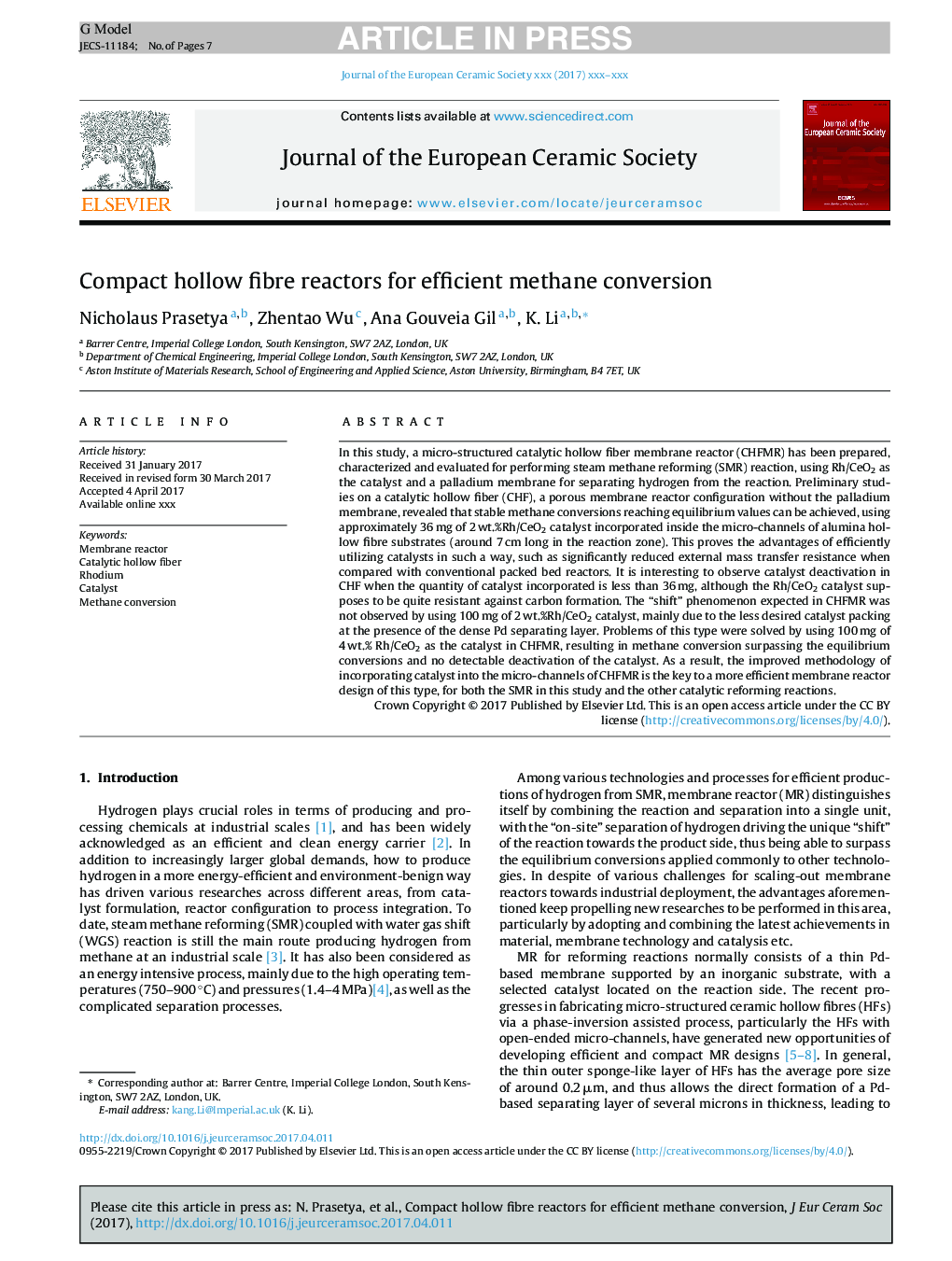| Article ID | Journal | Published Year | Pages | File Type |
|---|---|---|---|---|
| 7898931 | Journal of the European Ceramic Society | 2017 | 7 Pages |
Abstract
In this study, a micro-structured catalytic hollow fiber membrane reactor (CHFMR) has been prepared, characterized and evaluated for performing steam methane reforming (SMR) reaction, using Rh/CeO2 as the catalyst and a palladium membrane for separating hydrogen from the reaction. Preliminary studies on a catalytic hollow fiber (CHF), a porous membrane reactor configuration without the palladium membrane, revealed that stable methane conversions reaching equilibrium values can be achieved, using approximately 36Â mg of 2Â wt.%Rh/CeO2 catalyst incorporated inside the micro-channels of alumina hollow fibre substrates (around 7Â cm long in the reaction zone). This proves the advantages of efficiently utilizing catalysts in such a way, such as significantly reduced external mass transfer resistance when compared with conventional packed bed reactors. It is interesting to observe catalyst deactivation in CHF when the quantity of catalyst incorporated is less than 36Â mg, although the Rh/CeO2 catalyst supposes to be quite resistant against carbon formation. The “shift” phenomenon expected in CHFMR was not observed by using 100Â mg of 2Â wt.%Rh/CeO2 catalyst, mainly due to the less desired catalyst packing at the presence of the dense Pd separating layer. Problems of this type were solved by using 100Â mg of 4Â wt.% Rh/CeO2 as the catalyst in CHFMR, resulting in methane conversion surpassing the equilibrium conversions and no detectable deactivation of the catalyst. As a result, the improved methodology of incorporating catalyst into the micro-channels of CHFMR is the key to a more efficient membrane reactor design of this type, for both the SMR in this study and the other catalytic reforming reactions.
Related Topics
Physical Sciences and Engineering
Materials Science
Ceramics and Composites
Authors
Nicholaus Prasetya, Zhentao Wu, Ana Gouveia Gil, K. Li,
